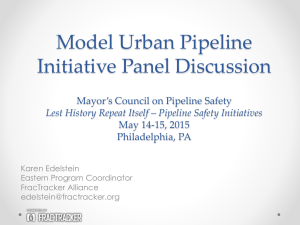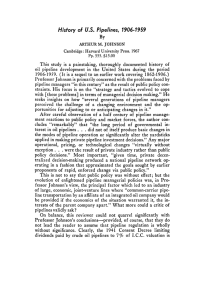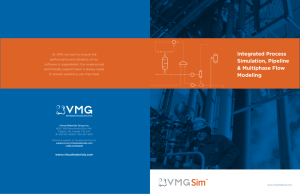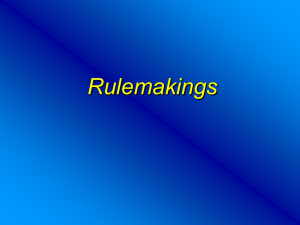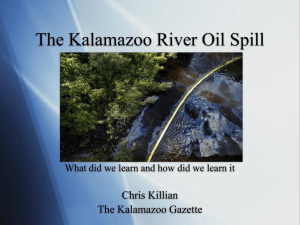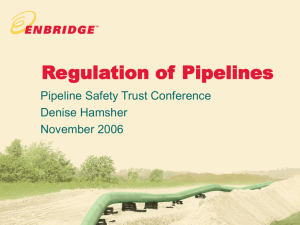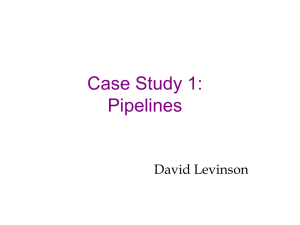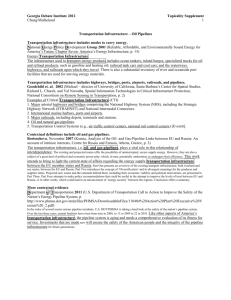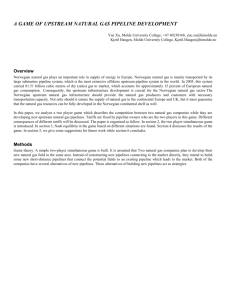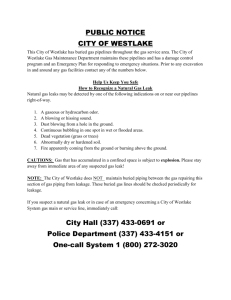Improved Model to Assess Stress Condition on Buried Pipelines
advertisement
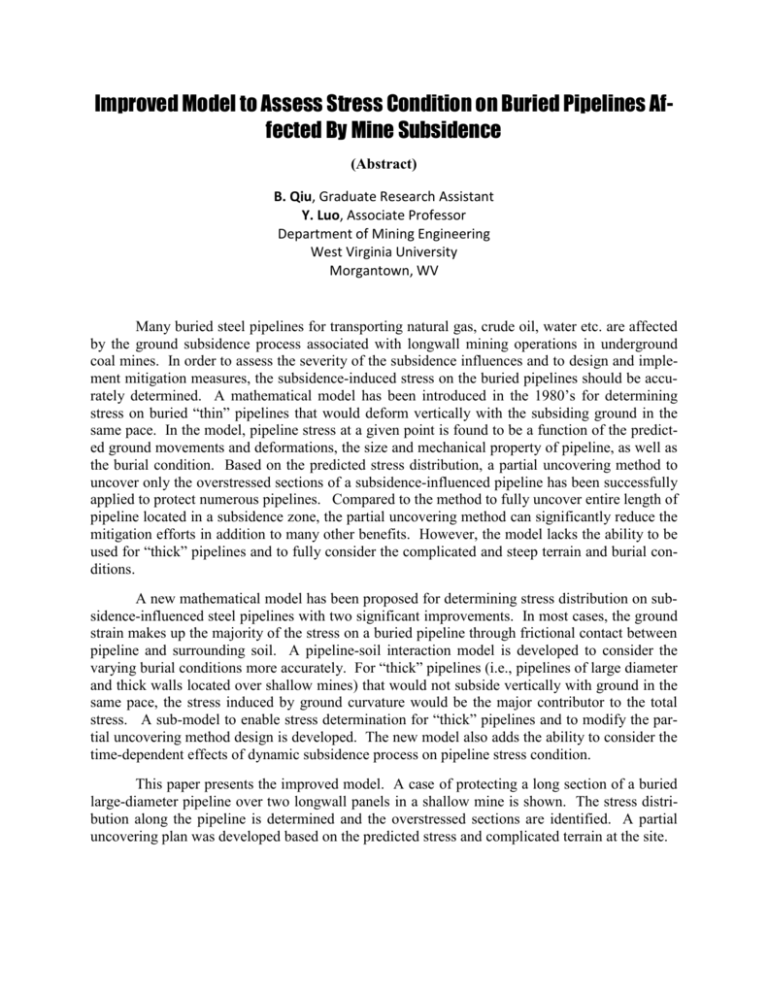
Improved Model to Assess Stress Condition on Buried Pipelines Affected By Mine Subsidence (Abstract) B. Qiu, Graduate Research Assistant Y. Luo, Associate Professor Department of Mining Engineering West Virginia University Morgantown, WV Many buried steel pipelines for transporting natural gas, crude oil, water etc. are affected by the ground subsidence process associated with longwall mining operations in underground coal mines. In order to assess the severity of the subsidence influences and to design and implement mitigation measures, the subsidence-induced stress on the buried pipelines should be accurately determined. A mathematical model has been introduced in the 1980’s for determining stress on buried “thin” pipelines that would deform vertically with the subsiding ground in the same pace. In the model, pipeline stress at a given point is found to be a function of the predicted ground movements and deformations, the size and mechanical property of pipeline, as well as the burial condition. Based on the predicted stress distribution, a partial uncovering method to uncover only the overstressed sections of a subsidence-influenced pipeline has been successfully applied to protect numerous pipelines. Compared to the method to fully uncover entire length of pipeline located in a subsidence zone, the partial uncovering method can significantly reduce the mitigation efforts in addition to many other benefits. However, the model lacks the ability to be used for “thick” pipelines and to fully consider the complicated and steep terrain and burial conditions. A new mathematical model has been proposed for determining stress distribution on subsidence-influenced steel pipelines with two significant improvements. In most cases, the ground strain makes up the majority of the stress on a buried pipeline through frictional contact between pipeline and surrounding soil. A pipeline-soil interaction model is developed to consider the varying burial conditions more accurately. For “thick” pipelines (i.e., pipelines of large diameter and thick walls located over shallow mines) that would not subside vertically with ground in the same pace, the stress induced by ground curvature would be the major contributor to the total stress. A sub-model to enable stress determination for “thick” pipelines and to modify the partial uncovering method design is developed. The new model also adds the ability to consider the time-dependent effects of dynamic subsidence process on pipeline stress condition. This paper presents the improved model. A case of protecting a long section of a buried large-diameter pipeline over two longwall panels in a shallow mine is shown. The stress distribution along the pipeline is determined and the overstressed sections are identified. A partial uncovering plan was developed based on the predicted stress and complicated terrain at the site.
